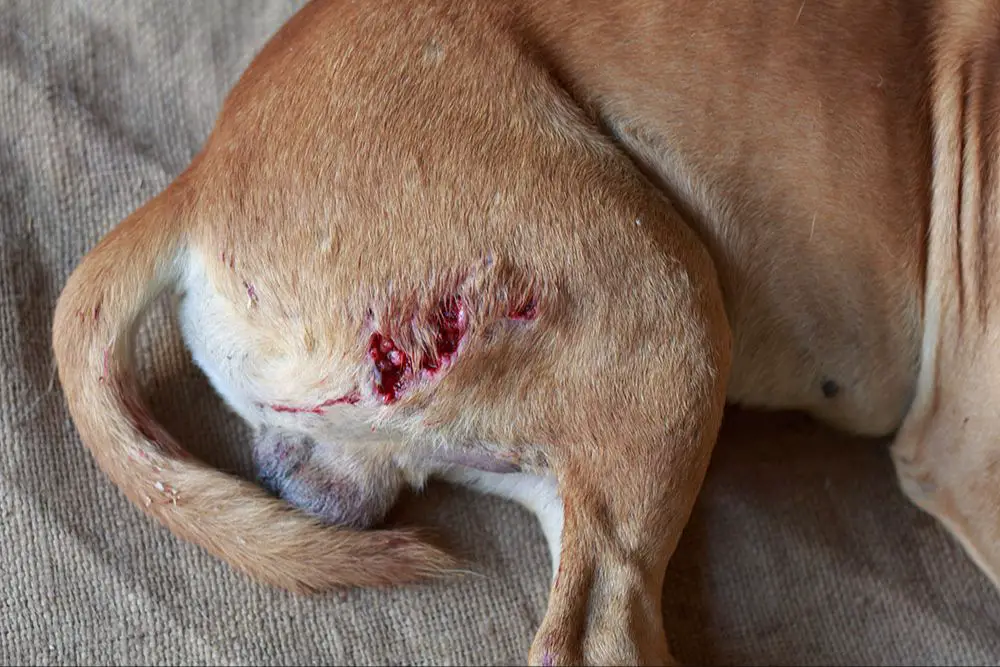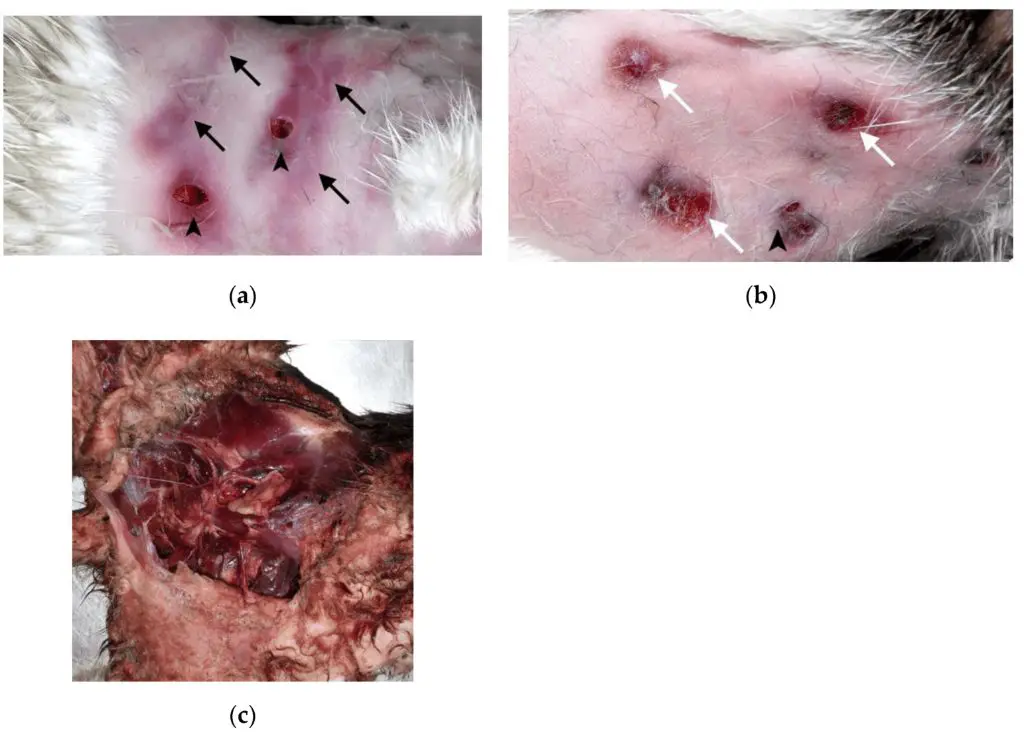Why Do Cat Bites Get Infected More Often Than Dog Bites?
Cat bites may seem minor at first, but they have a high risk of serious infection. Studies show that between 15-20% of cat bite wounds become infected, compared to only 5-10% of dog bite wounds.
With over 400,000 cat bites and 4.5 million dog bites occurring in the U.S. each year, that’s a lot of potentially infected wounds. So why do cat bites tend to get infected more often? Let’s take a closer look at the unique risk factors.
Anatomy of Cat Teeth
Cats have 30 teeth that are optimized for hunting prey and tearing meat. Their teeth are shaped like sharp needles, designed to puncture skin and grip flesh. The 4 long and sharp canine teeth are the largest, up to 1 inch long. The incisors at the front are small and pointed for nipping and biting. The premolars and molars along the sides are serrated for shearing and slicing meat off bones. Overall, a cat’s teeth are thin, fine, and sharp – perfect for biting into prey and causing deep puncture wounds.

Anatomy of Dog Teeth
Dogs have teeth that are blunter and duller in shape compared to cats. Their canine teeth are not as long, sharp or pointed. Rather than being optimized for gripping prey, dogs’ teeth are better suited for crushing and grinding food. The premolars and molars toward the back of a dog’s mouth have broad, flattened surfaces designed for chewing. While dogs do have sharp front teeth for biting and tearing meat, their other teeth are generally stubbier, flatter and less needle-like than cats’. The overall anatomy of dogs’ teeth contributes to less severe and dangerous bites compared to cats.
Bacteria in Cat Mouths
Cats have a significant amount of bacteria in their mouths that can cause infections if introduced into a wound. Their sharp, pointed teeth easily puncture skin and deliver bacteria deep into tissue. Cats have a higher prevalence of
Bartonella henselae, Pasteurella multocida
and other bacteria that are opportunistic pathogens that can infect bite wounds.
One study found that over 50% of cat bites become infected, often with Pasteurella, a bacteria found in the majority of healthy cats’ mouths. This is a much higher rate than dog bite infections.
Cats also groom themselves regularly, so claws and teeth harbor bacteria from the mouth. A puncture from a cat bite allows these bacteria quick access to tissue and blood where they can multiply and cause infection.
Additionally, cats have a natural instinct to bite and hold on to their prey. This causes deep puncture wounds that quickly deliver bacteria deep into tissue where it is harder to treat. The sharp teeth penetrate far into the skin, even down to the bone in some cases.
Bacteria in Dog Mouths
Dog mouths contain fewer types of bacteria that are harmful to humans than cat mouths. Dogs have more bacteria that are compatible with the human immune system because dogs have co-evolved alongside humans for thousands of years as companions and work animals.
The main bacteria found in dog saliva is Pasteurella. While Pasteurella can cause local infections if introduced into a bite wound, it does not normally cause systemic infections in humans. Other common bacteria in dog mouths like Streptococcus, Staphylococcus, and Neisseria species also do not typically cause serious infections from dog bites.
Furthermore, dogs produce less bacteria in their mouths than cats. The total bacterial load in dog saliva tends to be lower. Their mouths are also wider than cats’ mouths, so bites often do not penetrate as deep into tissue and have less bacteria inoculated directly into wounds.
The Bite Itself
Cats and dogs have very different biting behaviors that influence the potential for infection. Dogs are more likely to “nip” or quickly bite then release their victim. Their bites often do not penetrate deeply into the skin. Cats, on the other hand, have a tendency to sink their teeth in deeply and hold on with a sustained bite. This is due in part to their hunting instincts.
When cats bite, they use their long, needle-like teeth to pierce deeply into skin, tissue, and sometimes bone. Their teeth are designed for grasping prey and delivering larger puncture wounds. Cats also tend to hold on with their bite for longer periods while dogs snap and release more quickly. This deeper and prolonged bite gives more opportunity for bacteria from a cat’s mouth to enter the puncture wound.
The grinding motion cats sometimes use when biting also helps drive bacteria deeper into potential infection sites. So the way cats physically bite, combined with their unique oral bacteria, makes cat bites more prone to infection than dog bites.
Wound Contamination

A major reason why cat bites tend to become more easily infected than dog bites is that the shape and size of cat teeth and structure of their jaws leads to increased wound contamination during a bite. Cats have long, sharp teeth that are thin, needle-like and able to penetrate deeply into skin and tissue. Their upper and lower fangs are also set wide apart, enabling a cat’s jaws and teeth to go deeper into the bite wound.
In contrast, dogs have shorter, blunter teeth that tend to cause more surface level abrasions and punctures rather than deep penetrating wounds. The strength of a dog’s jaws also allows them to shake their head vigorously while biting, which tears at the skin and further contaminates the wound with bacteria.
Additionally, when cats bite they tend to latch on and sink their teeth in deeply, whereas dogs usually nip, snap and release. The tearing action of a dog bite allows the wound to open and drain, reducing the risk of infection, while a cat’s bite is a neater, deeper puncture that seals over top of the bacteria. This allows microorganisms to multiply rapidly within the oxygen-deprived environment.
Therefore, the physical nature of feline teeth and bites leads to increased introduction of bacteria deep into tissue and an environment where it thrives, causing cat bite wounds to become infected more frequently than dog bites. Proper cleaning and antibiotic treatment is crucial for cat bites.
Treating Cat and Dog Bites
Properly cleaning and caring for cat and dog bite wounds is critical for preventing infection. Here are some tips for treating bites:
Wash the wound with mild soap and water as soon as possible after the bite. This helps remove saliva, dirt, and bacteria from the wound. Do not use hydrogen peroxide or iodine, as these can damage tissue.

Apply an antibiotic ointment like polymixin B or bacitracin to the wound. This helps prevent bacterial infection.
Cover the wound with a sterile bandage or gauze. Change the bandage daily and check for signs of infection like redness, swelling, warmth, and pus.
Take over-the-counter pain relievers if needed for pain and swelling.
See a doctor for bites that are deep, large, or gaping. These may require stitches, antibiotic pills, or a tetanus shot.
Also get medical care if red streaking, increased pain, fever, or other signs of infection develop after a bite. Infected wounds may need oral antibiotics or draining of pus.
With proper first aid and wound care, most minor dog and cat bites can heal without complications. But it’s important to monitor all animal bites for any signs of worsening infection.
Preventing Cat Bites
There are some steps cat owners can take to help prevent cat bites from occurring:

Train your cat not to bite: Start training and socializing cats at a young age not to bite people. Use positive reinforcement like treats and praise to reward good behavior. If they start to get too rough or bite while playing, say “ouch!” in a high-pitched voice and walk away to teach them that biting ends playtime.
Watch for warning signs: Learn your cat’s body language. Signs like a swishing tail, ears back, staring, and tense muscles often precede aggressive behavior like biting. If you notice these signs, stop petting or interacting and give them space.
Trim nails regularly: Keeping your cat’s nails trimmed reduces the potential damage from scratches if they do bite or scratch. Ask your vet for guidance on proper nail trimming.
Use deterrent sprays: Try using bitter apple or lemon-scented sprays on your hands and feet to deter biting. The smell and taste are unpleasant to cats.
Avoid startling your cat: Move slowly around cats and announce your presence so you don’t startle them. Startled cats may react by biting or scratching.
By understanding cat behavior, keeping nails trimmed, and deterring bites, cat owners can reduce the likelihood of painful bites occurring.
Conclusion
In summary, cat bites are more likely to become infected than dog bites for several reasons. Cats have sharper, needle-like teeth that can penetrate deep into skin and tissue. Their teeth are also grooved, which allows bacteria to more easily enter a wound. Cats harbor more virulent strains of bacteria like Pasteurella multocida in their mouths than dogs do. When a cat bites, its sharp teeth drive this bacteria deep into the puncture wound where it is harder to clean out and more likely to cause infection. Dog bites tend to be slashing wounds from their flatter teeth that are easier to clean. While all animal bites should receive medical care, cat bites in particular need prompt attention and antibiotic treatment to prevent dangerous infections that could require hospitalization.